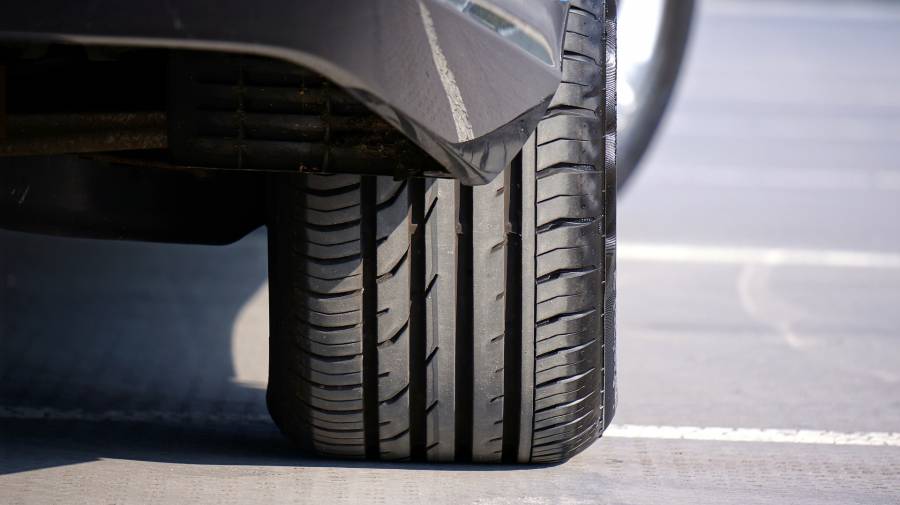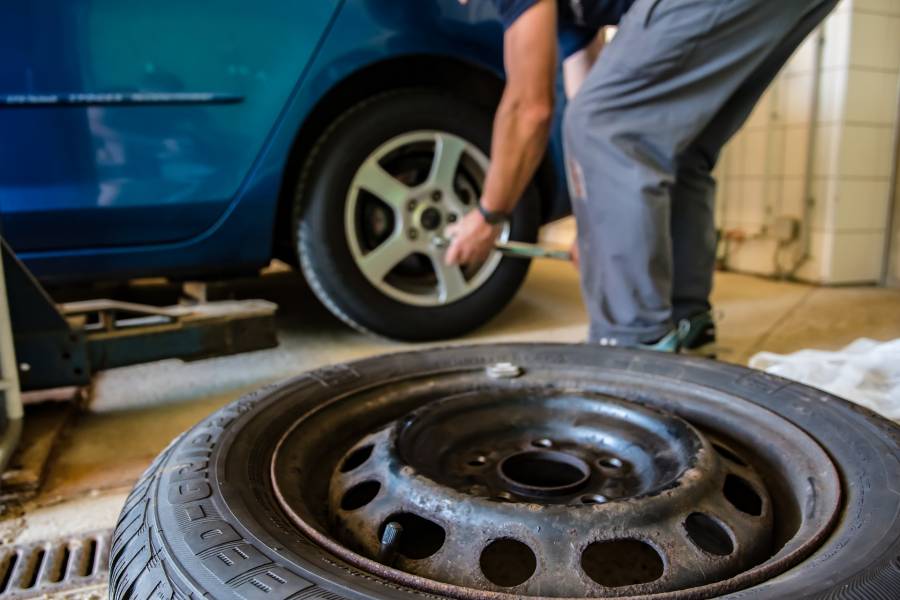Quick Navigation
There’s nothing more annoying than car tires making unexpected noises.
Just like the other components of your car, tires are as crucial since they ensure you move safely on the road.

There are several factors behind your car tires making womp-womp noises. We are here to help you find out what causes these strange noises and how you can fix them.
What Causes Your Car Tires “Womp-Womp” Noise?
1. Uneven Tread Tires
Treads come in different designs. Depending on the design, tires create different volumes of noise.
These noises are normal and shouldn’t worry you. However, the tires could create strange noises such as the womp noises.
If your car tires make womp-womp noises, there may be uneven wear in the tread tire.
If the wear isn’t uniform, you will hear the womp noise as you drive because there is inconsistent friction between the tires and the road.
Causes
One of the leading causes of uneven tire wear is unbalanced wheels. If the mechanic fails to balance your wheels during replacement, it won’t be long before you notice uneven tread wear.
Unbalanced wheels produce different amounts of pressure that wear out certain tread parts. If the tires wear out more in certain areas than others, you will start hearing the womp noise as you drive.
Your car tires can also become uneven if the wheels are damaged. The wheel can get bent or twisted by driving over rough terrain such as potholes.
Bent wheels produce vibrations as you drive, which could wear your tires unevenly.
Solution
All you need to do is replace uneven tire tread with new ones. If you prefer tread noise when driving, you can get new tires with tread designs that do not produce much noise.
Also, ensure that you take your car to be serviced by a certified mechanic. It may avoid unbalanced wheels and other misalignment issues.
2. Belt Separation
The womp-womp noise coming from the tires could be because of belt separation or a broken belt. The noise comes from the broken bits that create roughness on the tire surface.
When the belt separates, your steering wheel starts to shake, and the car may begin to vibrate. You may also notice a change in the shape of the tire.
Broken belts are dangerous for you as well as pedestrians.
Causes
Several factors lead to belt separation. Most tire belt separations result from a defect during the manufacturing process.
It creates issues such as tread casing failure, where the tread doesn’t adhere properly to the tire casing.
Since this is a manufacturer’s defect, you should check the warranty and see the compensation you ought to receive.
Broken belts can also be caused by oversteering, dirt accumulation, or improper mounting. Also, driving with tires with too much air can lead to belt separation.
The tires absorb the shock when driving over bumps and potholes, ensuring comfort and a smooth ride. However, absorbing the impact becomes difficult if there is too much air in the tires.
It causes the belt to break, and you also start hearing the womp-womp noise coming from the tires.
Solution
Regularly check PSI levels in every tire before you start driving.
If the issue is oversteering, have your car checked out by a professional. It will help you know whether the belt and the tread are in the proper condition and right position.
You may also want to avoid driving in uneven terrains at high speeds.

3. Worn Suspension Parts
You may also hear the womp noise coming from the tires if one of the suspension parts is worn out. A certified mechanic can help identify any component that needs repair.
A defective CV joint, for example, can create womp noise. Bad ball joints, damaged springs, and failing control arms can also produce the womp noise.
Worn strut bearings are also a culprit. The strut bearing usually connects the car to the strut and enhances car handling.
Strut bearing can wear over time, and if they’re not replaced, they could cause uneven tire wear and alignment problems.
Causes
In general, a car suspension may get damaged by the constant shock from rough roads. With time, the suspension may wear out, creating womp-womp noise.
If your car’s suspension system is bad, it may become hard to steer the wheel, you may also experience a bumpy ride, and your car starts to pull to one side when driving.
Solution
The suspension system comprises several components, all of which work together to ensure you have a safe and comfortable ride.
To know which exact part of the suspension is the cause for the womp noise, you may need to have your car serviced by a professional.
4. Improper Tire Inflation
If your car tires are over-inflated or under-inflated, the tires start producing the womp noises. By checking the tire wear, you can know that the tires are either under-inflated or overinflated.
If the center of the tires is worn out, then it could be that they are over-inflated. For edge tire wear, under-inflation is often the culprit.
Under-inflation means limited tire pressure, which causes too much of the tire surface to touch the road. It increases friction, overheating the tire, causing it to blow out or wear out prematurely.
On the other hand, over-inflation means too much pressure on the tires. It causes them to wear and tear down quickly, especially at the center.
It also changes the shape of the tire shape and starts to produce the womp noises that you hear as you drive.
Solution
The remedy to improper tire inflation is simple.
If you don’t want to hear the annoying womp noise, then ensure your tires are neither overinflated nor underinflated. Doing this also prevents uneven tire wear.
5. Wheel Misalignment
Last but not least, wheel misalignment could produce womp-womp noise from the car tire.
Misaligned wheels also reduce the life span of your tires since they cause them to wear out faster. If not fixed, they could easily damage other parts of your car.
If your car suffers from wheel misalignment, it may pull to one side when driving, the steering wheel vibrates, and may fail to return to the center when turned.
Causes
Alignment issues can be caused by:
- Heavy impact. It occurs during an accident or when you hit a curb or pothole.
- Normal wear. If you’re driving a car, it’s likely that the misalignment is caused by normal wear and tear.
- Improper suspension alignment. The wheels can misalign if you fail to adjust the height of your car to that of the suspension.
Solution
A certified mechanic can check the wheel’s alignment and adjust it if necessary. But you can fix it yourself if you have the skills and the tools; for instance, you can quickly fix a negative toe at home.
To avoid wheel misalignment, avoid driving over bumps and potholes at high speeds. Also, ensure that the suspension is correctly adjusted to the height of your car.

With comprehensive experience in writing exceptional quality articles and blogs about cars and related stuff, Daniel is one of the finest bloggers and a hardcore car lover we have. He is an ASE certified technician with an across-the-board experience of 10 years in the industry. He could not help tinkering with anything he got his hands on from a young age, which led to his remarkable career in the automotive repair industry.
When he is not under any hood, you can find him on the water or in the woods to pursue his passion for hunting and fishing. He has been writing for multiple sectors and is a regular contributor to several publications.
He currently owns a Nissan 300ZX TT and a Pearl Yellow but plans to upgrade it to 550 HP. His favorites include the Koenigsegg CCX and Lamborghini Diablo 6.0 VT, but for him, the Ferrari 360 Spider is one of the sexiest cars that exists to date.
Being an avid world traveler, he has spent most of his time analyzing the automotive markets, latest technology, and local favorites to enhance his knowledge base. He is currently living in North Caroline, where it’s all about food and coffee and, of course, cars.






